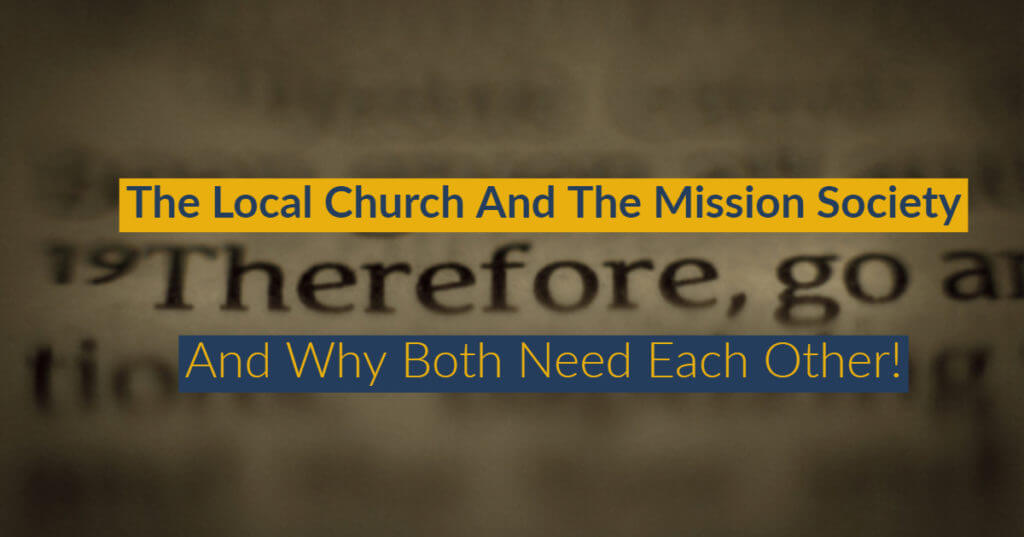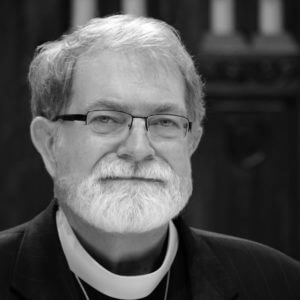Ralph Winter (1924-2009) was an American missiologist who helped pioneer Theological Education by Extension, raised the debate about the role of the church and mission structures, and became well-known as the advocate for pioneer outreach among unreached people groups. He was the founder of the U.S. Center for World Mission (USCWM). During his 1974 presentation at the Congress for World Evangelization in Lausanne, Switzerland, Winter shifted global mission strategy from a focus on political boundaries to a focus on distinct people groups. Winter argued that instead of targeting countries, mission agencies needed to target the thousands of people groups worldwide, over half of which had not yet been reached with the gospel message.
Billy Graham once wrote: “Ralph Winter has not only helped promote evangelism among many mission boards around the world, but by his research, training and publishing he has accelerated world evangelization.” In 2005, Winter was named by Time magazine as one of the 25 Most Influential Evangelicals in America.
Today, I’d like to focus on a groundbreaking presentation Winter delivered in 1973 in Seoul, Korea at the founding of the Asia Missions Association, The Two Structures of God’s Redemptive Mission. Ralph Winter describes the forms that God’s two “redemptive structures” for mission take in every human society and have taken throughout history. His technical term for these two structures are the modality and the sodality, but they are in fact the local church (modality) and the mission society (sodality). Winter argues persuasively that what we call “God’s people, the Church” in the New Testament and throughout history has always been represented by both the local church and missionary societies/movements. He also contends that both are legitimate and necessary for the sake of world evangelization, making disciples of Jesus Christ of all nations (Matthew 28:16-20). Within our own global Anglican context, I’d like to take Winter’s thesis one step further with the help of Acts 15. We need both a missionary movement (GAFCON) and local churches (modalities or ecclesial structure) to fulfill Christ’s Great Commission as Anglicans, especially in the face of increasing secularization and false teaching from the West.
From the beginning: The local church and missionary “bands”
Winter points out that the first structure that emerges in the New Testament is the local church (modality) which was built along Jewish synagogue lines. The local church embraces the community of the faithful in any given place. The defining characteristic of this structure is that it is a body (cf. I Corinthians 12 and Ephesians 4), organized around the way the Holy Spirit birthed it to function on Pentecost (see Acts 2:42-47), including old and young, male and female, Jew and Greek, slave and free.
But the second, quite different structure to emerge in the New Testament as “the Church” was what Winter calls “the missionary band” (sodality). This was Paul and his companions or “team” who evangelized the known world. It was modeled along the lines of Jewish evangelists who had already gone out and “preached Moses in every city (of the Roman Empire)” (Acts 15:21). The defining characteristic of this structure is that it is a society organized around a purpose, Christ’s Great Commission to make disciples of all nations (Matt. 28:16-20). True enough, Winter notes, Paul was sent out by the local Church in Antioch. “But once away from Antioch he seemed very much on his own…it was not simply the Antioch church operating at a distance from its home base. It was something else, something different.” Winter goes on to describe Paul’s missionary band as
“…a prototype of all subsequent missionary endeavors organized out of committed, experienced workers who affiliated themselves as a second decision beyond membership in the first structure.” (Emphasis added)
Note well this additional commitment of Paul and his companions, and as well the different, more mobile and autonomous structure they operated under in order to fulfill their missionary purpose.
Within Roman culture, the local church (modality) assimilated into the Roman context with by gathering the local faithful into territorial jurisdictions (dioceses) overseen by bishops (episcope) having authority over more than one congregation not altogether different from the pattern of Roman civil government. Meanwhile the “mission societies” carried forward a disciplined structure borrowed from the Roman military, which allowed Christians to make a “second-level choice”—and additional specific commitment that emerged through monastic structures whose membership was limited by a shared rule of life, age, sex or marital status.
GAFCON bears the mark of such additional commitment through subscription to the Jerusalem Declaration as a requirement for membership and participation in its gatherings. Yes, GAFCON is a movement of national, regional, diocesan and extra-territorial dioceses and churches (modalities) within the Anglican Communion. No, it is not a monastic movement. But it does bear the mark of a deep and unyielding commitment to the recovery of the ultimate clarity and authority of the Bible, the renewal of Reformational Anglicanism throughout the Communion, and world evangelization. GAFCON will not compromise with the marks of the “lowest common denominator” Anglicanism shaped by the secularizing churches of the West. It is a movement, and not merely a moment, and as such functions very much like a global, Anglican missionary society (sodality).
Collaboration rather than rivalry and conflict
Winter borrows heavily from the history of the Church of England to demonstrate how evangelism, mission and church growth increase when the local church and the mission society collaborate together. He cites the collaboration between Pope Gregory the Great and Augustine of Canterbury as “the most outstanding illustration in the early medieval period of the importance of the relationship between modality and sodality.” Gregory, as Bishop of Rome, was the head of a modality. But he had no structure to call upon to plant Churches in England where Celtic Christianity had been deeply wounded by Saxon warriors from the continent. Both Gregory and Augustine were products of the monastic houses (sodalities). So Gregory called upon his friend Augustine and other members of the same monastery to go to England on mission to plant churches through a diocesan structure. Augustine’s missionary society rebuilt the Church and expanded it—as did other monastic movements throughout Europe. People were converted, and churches, dioceses and provinces were planted. The mission society “was almost always the structural prime mover, the source of inspiration and renewal which overflowed into the papacy and created the reform movements which blessed diocesan Christianity (modalities) from time to time.”
Sadly, the monastic societies themselves became corrupted as they gained wealth and secular power. They lost their moorings and their mission, as did the local church. So, the Protestant Reformers abolished them for good reasons. But, as Winter points out, this left the reformed Church without the mission structures to carry on world evangelization for almost 300 years! John Wesley effectively launched a missionary movement within Anglicanism, calling people to new beginnings and higher commitments as followers of Jesus Christ without conflicting with the stated meetings of the existing local churches of the Church of England. But the established leadership of the Church of England viewed Wesley and his movement as a rival and opposed it. Sadly as well, his mission society was rejected. In doing so, Anglicanism missed an opportunity to recover its Reformational roots and its mission.
It was not until the 19th century when strategic thinkers within the Church of England re-created the sodality or mission society by launching the Church Missionary Society and others to evangelize the world. The Church of England blessed CMS, USPG and others to carry the gospel to the rest of the world, and so were birthed the Churches of the Anglican Communion.
It is noteworthy that GAFCON’s theme at its third gathering in 2018 in Jerusalem was the renewal of world evangelization by its member Churches: “Proclaiming Christ faithfully to the nations.” Since then, nine new networks have been launched including networks for global evangelization and church planting.
Conclusion
Within our own Anglican context we are facing two challenges. Both challenges or “deficits” impact our call to mission. What I call “the Gospel deficit” is the crisis of false teaching in the Anglican Communion—principally in the increasingly secularized countries and cultures of North America and Europe. Over the years, the American Anglican Council has documented at length these departures from the Bible on essentials of the Christian faith, as well as departures from the Bible and the received teaching of the Church on gender, human sexuality and marriage. The documentation of this false teaching is voluminous, and from many sources.[1]
But there is another deficit equally troubling. It is what some have called “The Ecclesial Deficit”—the shorthand way of saying that there is no final authority or decision-making body among the Churches of the Anglican Communion that can say “NO” to false teaching that leads people astray. This “ecclesial deficit” was defined formally in the Windsor Continuation Group Report (2008):
“the inability to uphold structures which can make decisions which carry force in the life of the Churches of the Communion. . . . The question of the limits of diversity [which] becomes acute when major differences arise in the life of the communion of the Churches which concern the faith, order or moral life of the Communion…” (Windsor Continuation Group Report, 51, 53)
Within the Global Anglican Communion, the GAFCON movement continues to address this Gospel deficit. It stands boldly for the “one Gospel” to refute false teaching “which is in reality no gospel at all” (Gal. 1:7), and to fulfill Christ’s Great Commission by “preaching Christ faithfully to all nations” (the theme of GAFCON Jerusalem 2018). With exceptional boldness and specificity GAFCON has been challenging “false Gospels” and false teaching throughout the Anglican Communion, beginning in The Jerusalem Statement and Jerusalem Declaration (2008), in the GAFCON Nairobi 2013 Communique and the GAFCON Letter to the Churches, Jerusalem 2018.
We can find many essays promoting the need for mission societies and “parachurch” ministries to remedy the failure of the local church to do mission. As the arguments go, the local church cannot do mission properly without the help of such mission societies.
I think there is some truth in that. But I’d like to note a different pattern in Acts 15. It runs the other way. You see, Paul’s mission society was encountering rivalry, resistance and even persecution from false teachers who were coming in after Paul and telling the Gentiles that they couldn’t follow Jesus without assuming the full weight of the Jewish law. In other words, these false teachers were saying that Jesus Christ and his death on the cross were not enough for salvation or membership in the Church. The Gentiles had to put on Moses and the law as well.
Paul was rightly upset. He had some strong words for these false teachers (see Galatians 1:6-9; 2:4-5, 19-21; 5:2-12). But neither he nor his missionary band had authority or capacity to halt the cancer of this false teaching. It took a gathering of the local church in Jerusalem, its apostles and elders, to come together as a council and to decide in this “conciliar way” (as I have written elsewhere) to reject the false teaching of the Judaizers and to reaffirm faith in Jesus Christ alone as sufficient (see Acts 15:22-33).
In this case, the earliest case of collaboration in the New Testament, the missionary society needed the local church to discern, guard and propagate the faith so the mission could continue to expand, and with it the evangelization of the known world.
GAFCON has been called by God, and has the gifts, to overcome the “Gospel deficit” by continuing to proclaim Christ faithfully to the nations. Other Anglicans faithful to Scripture and apostolic tradition in the Global South have the calling and the gifts to establish fully conciliar and synodal structures that will say “NO” to false teaching, guarding the faith and order of the Church for the sake of Gospel mission. Imagine what could happen if these two groups put aside what differences they may have and joined together their calling and gifts for the sake of Gospel mission among the Communion of Anglican Churches!
Both mission society and local church are legitimate and necessary. Both need each other.
Canon Phil Ashey is the President and CEO of the American Anglican Council.



